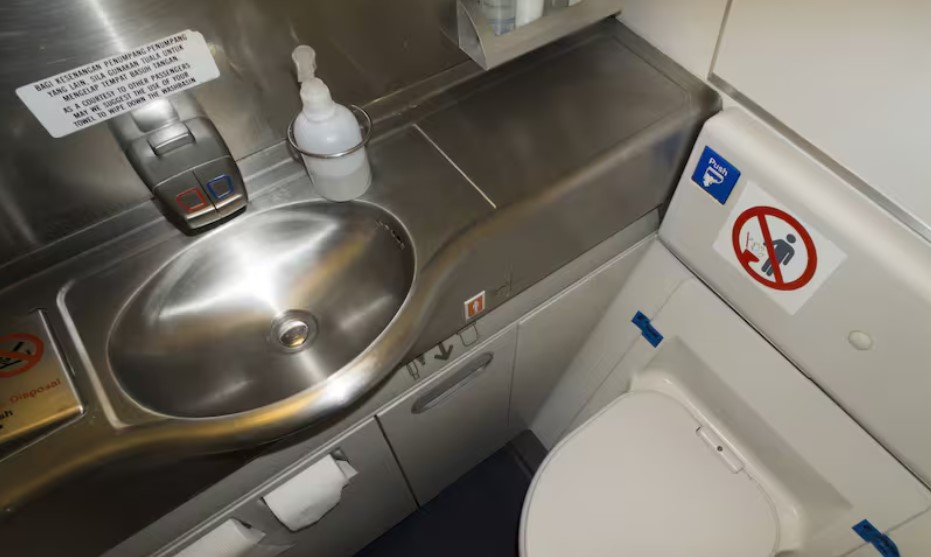When the flush in an aeroplane toilet is activated, it makes a deafening noise. Why is that? And where does it all go?
The aircraft toilet is a mystery: it is extremely loud and uses little water. But where does everything that is flushed down the toilet end up?
Why the aircraft toilet is so loud
Vacuum toilets are used in most airplanes. This means that the contents of the bowl are removed with the help of water and negative pressure. In principle, the on-board toilet would also work without water. However, it flushes away soil that is not sucked up by the vacuum, making the bowl cleaner.
The negative pressure can be generated in two different ways. They depend on the flight altitude:
On the ground as well as at low altitude, a generator is used to create a strong airflow that sucks in the contents of the loo bowl.
If the flight altitude is high enough—from 500 meters—the differential pressure between the aircraft toilet (normal pressure) and the tank (low pressure) is usually sufficient to suck out the urine and faeces.
The loo, therefore, works in a similar way to a hoover.
As the airflow is so strong, it is correspondingly loud. If it were weaker, it would be quieter, but then it could also happen that not everything is sucked away.
Don’t flush too early
Passengers are advised not to flush the on-board toilet until they have already stood up. This is because the high air suction can cause people sitting on the toilet and flushing to be sucked in. This can happen, for example, if the buttocks cover the toilet seat entirely, creating a vacuum in the bowl.
Where does the flushed waste end up?
Many people believe that aeroplanes dispose of urine and faeces during the flight. After all, the excrement is just ballast and takes up valuable space in the aircraft. For this reason, the aircraft is mainly flushed with air and not water.
What is correct is that the faeces end up in a tank together with blue, putrefaction-reducing chemicals. They are usually stored there until landing and subsequent cleaning of the aircraft.
However, a technical defect can cause some tank contents to escape during the flight. As the outside temperature is so low at a certain altitude, urine, faeces, flushing water, and chemicals freeze at the outlet hatch. This can be recognised by the blue trace outside the aircraft (also known as ‘blue ice’).
The frozen can either fall off during the flight or only when landing.
- source: t-online.de/picture: reisereporter.de
This post has already been read 8107 times!



